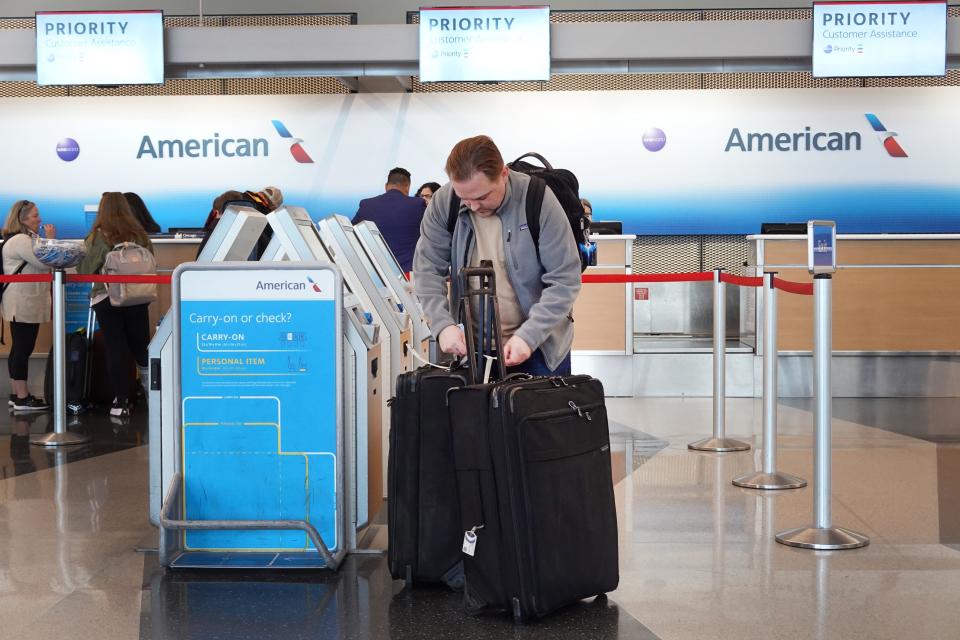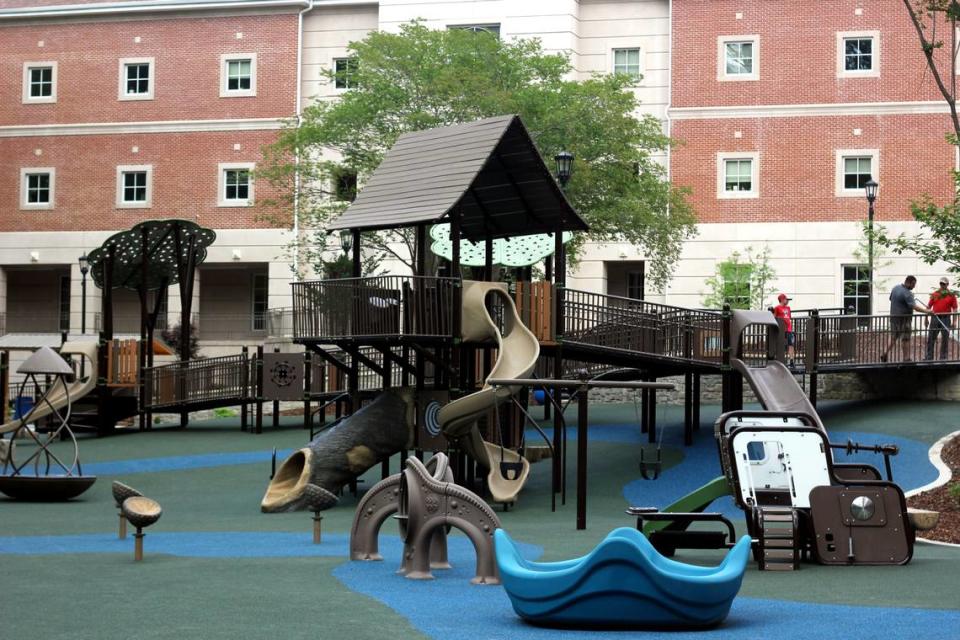May 28—Imagine a city where kids can walk to school, where grocery stores are just a short bike ride away, where parks are plentiful and housing is easy to find. A city that’s a refuge for those fleeing climate disaster, a safe place where buildings in flood zones have been constructed with rising sea levels in mind. A city with easy access to public transit, where getting around is simple and quick.
That is the version of Portland that city staff have been working toward since 2017, when they began rewriting zoning rules in a process known as ReCode that now is nearly complete.
The city released the final portion of its proposed changes last month and is asking for public input this summer before it sends its proposal to the planning board and on to the City Council in the fall.
Staff have spent seven years meticulously working to overhaul zoning regulations — which dictate where and how parks, schools, businesses and housing can be built — while trying to accommodate the varied needs and concerns of developers, residents and businesses.
Developers have long complained that Portland’s permitting process is arduous and further bogged down by antiquated zoning laws. Some argue that those restrictions are stunting the city’s growth in an extremely tight housing market that needs to make parts of Portland more densely populated and walkable.
Many residents, of course, don’t want to see their neighborhoods change. Talk of allowing taller, denser housing complexes and accessory dwelling units often brings large crowds to meetings.
Those leading the ReCode effort say it’s about letting Portland grow well while preserving its unique character.
ZONING REWRITE
The proposed changes headed to the council this fall are substantial in scope. City staff are proposing an entirely new map that renames and changes all of Portland’s existing zones.
They vary neighborhood to neighborhood, but one key change would apply throughout: Multifamily homes would be allowed in every residential zone; no more single-family-only neighborhoods.
Among the other key changes:
What’s currently known as an R-3 zone, which allows single-family homes and some existing apartment buildings, would become an RN-2 zone, allowing single-family homes, duplexes, triplexes and quadruplexes.
The maximum height of buildings downtown and in some major corridors, such as Forest Avenue and Congress Street, would be increased. Right now, the tallest structure in Portland — the new 18-story mixed-use building on Federal Street — stands about 190 feet.
Under the new zoning, buildings in some parts of downtown could be nearly twice as tall, stretching up to 350 feet, while the height limit along sections of Forest Avenue would rise from 45 to 65 feet.
The new maps would create coastal flood resilience overlay zones, which would require certain types of developments like housing, schools and hospitals to be elevated, lifting their first floors above ground level.
Transit-oriented development also plays a key role. Many urban planners believe that facilitating growth around major transportation hubs helps a city become more resilient and easier to negotiate. A city designed with this in mind might have a day care center, grocery stores, coffee shops and dense housing clustered around certain key bus stops around the city and in the downtown area.
Lydia Lo, a national housing policy researcher with the Urban Institute, has watched numerous other cities — including Washington; Boise, Idaho; and Austin, Texas — go through similar changes.
“Zoning code rewrites are such an important modernization of a tool that is so dated that it’s become unworkable,” Lo said. “Often these are Frankenstein documents that don’t make any sense to anyone. It takes lawyers and experts to even understand what can be built.”
FIRST TIME IN 50 YEARS
Nell Donaldson, the director of special projects, and Kevin Kraft, interim director of planning, oversee the ReCode process. When they got started in 2017, they knew it would be a big undertaking.
The city’s zoning ordinance was nearly a thousand pages long. Parts of it had been typed on a typewriter. It was often contradictory and a headache to understand. It became clear that the first step of ReCode needed to be organizational, Donaldson said.
“This thing hadn’t been looked at from a soup-to-nuts level in 50 years,” she said. While the city’s zoning has been updated over the years, the last big overhaul was in the 1970s.
The two planners decided to split ReCode into two phases: one to consolidate the existing rules into a more coherent format, one to reconfigure the whole map.
It took three years to get through phase one. The result was a cleaner, 394-page ordinance — a third of its former size — that was presented to the planning board and then the City Council for approval.
Some councilors, already frustrated by the slow pace, pushed to make this first vote a forum for changes in policy.
Kim Cook was on the council at the time, in 2020. She said she would have liked to include policy changes earlier in the process instead of holding off until the second phase.
“I was a staunch advocate for a streamlined ReCode process, incorporating the policy priorities of the City Council from the initial draft onward,” she wrote in an email. But she said others in City Hall, including the city manager, disagreed.
The council ended up voting, outside the vote on the cleaned-up ordinance, to make some changes to ease restrictions on ADUs and to scale back residential parking requirements for new housing developments and businesses.
For phase two, the city brought in a consultant to look at existing zoning regulations in light of the goals of the comprehensive plan — known as Portland’s Plan 2030 — and identify where changes most needed to be made.
“The comprehensive plan is like the big visionary goal-setting document,” said Kraft. “ReCode is one of the major ways we reach that vision.”
‘CONCENTRATE SIGNIFICANT GROWTH’
Portland’s Plan 2030 is nearly 100 pages long and lays out a future Portland with dense neighborhoods, affordable housing, economic opportunity and climate resilience. ReCode is meant to make it all possible.
“Zoning creates the boundaries of what’s possible and the market and demand fill in the rest,” said Lo, the housing policy expert.
Donaldson and Kraft say that, despite big proposed changes, they don’t want to change Portland’s character.
“The intent is not to radically reshape most of the city,” said Donaldson. “The idea is to concentrate significant growth where there’s transit, where there are jobs, and where people can walk to those things. So that is major intersections and corridors and downtown.”
View this document on Scribd
If the zoning changes are approved, high-rise apartment complexes won’t pop up overnight. But new projects could get underway as soon as next year, Lo said. There’s a big difference, she said, between allowing new types of development and when those come to fruition.
Kraft says the city has done its best to straddle the city’s need for growth with Portlanders’ love for the way it is right now.
He said he’s heard concerns about the traffic that could come with increased density and building height. He’s heard people say that they fear tall buildings could block the sun, making their neighborhood darker and colder.
Such worries are valid, he said, and his staff has tried to ease them by avoiding big changes to residential neighborhoods.
As feedback comes in, city staff know they’ll have to make changes to their proposal. And more changes still are all but certain after ReCode reaches the council. It’s all been a delicate balancing act.
“Portland’s plan says very explicitly that the whole city should grow and change, but that growth and change won’t look the same everywhere,” Donaldson said.
Jeff Levine, who oversaw the first few years of ReCode before he left his job as the city’s director of planning and urban development in 2019, said that from the beginning city staff aimed to create more subtle growth — via multifamily units and ADUs — in its outer neighborhoods.
Levine, who still lives in Portland but now teaches at MIT, knows that some residents will be uncomfortable with the idea of allowing denser housing throughout the city, but he is quick to point out that neighborhoods full of multifamily homes used to be the norm in Portland.
“Given where we are in the housing market right now and given how hard it is for young Mainers to find places to live, this is an opportunity for everybody,” he said. “But you have to get past that fear of not wanting anything to change.”
Tom Landry, who owns Benchmark Realty and has developed housing projects throughout the city, is in a different camp of those who don’t think the proposed zoning changes go far enough.
“This process really should have taken place 20 years ago,” said Landry, who has been keeping a close eye on ReCode. “It’s taking longer than any of us had hoped, and to me it is a quarter step when it should be a full step.”
He thinks building height hasn’t been increased enough to meaningfully improve density outside of downtown, and he’d like to see more substantial growth allowed along Congress Street and Washington and Forest avenues.
“Allowing for height provides more opportunity for people to build where the infrastructure is, to create those walkable and dense neighborhoods we all love,” Landry said. “Then there will be less demand to gobble up our forests and farmland.”
SLOW CHANGES
Out with the new, in with the old. That’s what urban planners say about getting rid of single-family zoning. Bert and Ernie lived in an ADU on Sesame Street.
“These smaller developments like duplexes and ADUs were allowed in the 1950s, and then a lot of places took them off the books in the ’60s and ’70s,” Lo said. “That was really at the height of white flight. These racially charged policies were enacted in an effort to keep people out.”
At the start of the ReCode process, Levine says, the city did a neighborhood-by-neighborhood analysis and found that many beloved historical buildings would not have been permitted under the existing zoning laws because of that shift away from multifamily living.
Sections of Munjoy Hill that since the 70s have been zoned only for single-family homes or duplexes, for example, are characterized by big clapboard houses with more than four units.
Levine says those outdated views on what it means to live in a multifamily neighborhood could be holding people back from embracing what he sees as a positive change.
“These kinds of zoning changes can open up more economic opportunity for renters and owners. It might mean you can build an ADU for your aging parents or for a kid who can’t find a place to live after college,” he said.
And these are only proposals to change what’s allowed, he said — not guarantees that neighborhoods will be radically overhauled.
It’s extremely unlikely, for instance, he said, that East Deering will soon be filled with tightly clustered multifamily homes. Most people, after all, probably won’t tear down their homes and build quadruplexes. Most won’t put up ADUs or add second units to their homes — though some will. The changes could make housing easier to find, he said, but most neighborhoods will look more or less the same.
The results of the changes, if they’re approved, also likely won’t be seen for decades. Lo, the urban planning expert, said research shows it can take 20 to 30 years to really see the impact of major rezoning.
The generations yet to come could work and play and grow up in the Portland being sketched today. It would take decades to color it in.
Copy the Story Link
Signup bonus from





